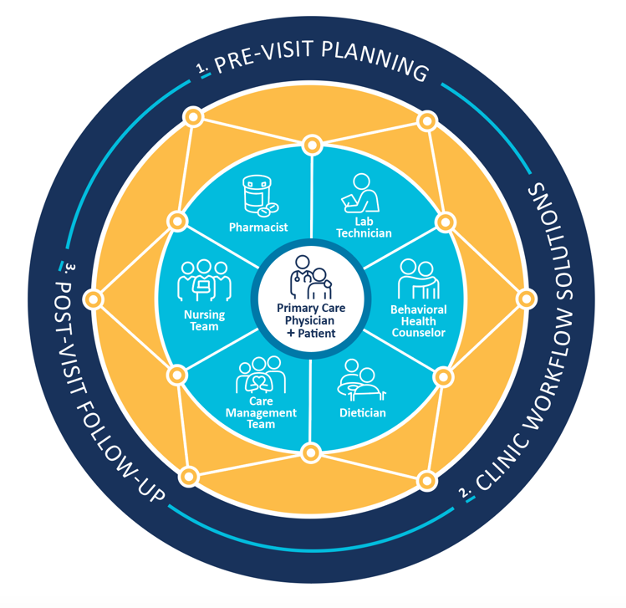VillageMD has a vodcast, "Working Smarter," which covers legal issues for value-based practitioners. There is only one publicly available written publication from the company, a whitepaper on integrating pharmacies and clinics. However, the company also shares its thought leadership through interviews in the industry media and at industry events and conferences.
Findings
Written Publications
- The only publicly available written publication by VillageMD from the last two years is a "Pharmacy Integration: Crossing the Chasm between Pharmacy and Clinic Operations" whitepaper.
- It was published in May 2020.
- The whitepaper focuses on improving patient outcomes through the integration of the pharmacy and the clinic. It advises integrating them in a three-step process, which includes shared electronic medical records, setting up a communication platform, and executing a collaborative practice agreement.
- It also provides a comprehensive list of benefits of such integration and includes rich data on medication adherence issues when pharmacy and clinic operations aren't integrated.
- An example of a visual from the whitepaper can be seen below.
- It is worth noting that there are several job postings for directors of content development at VillageMD. One of the job responsibilities is "producing a high-volume of creative marketing assets." Two of the examples of those assets are research-based reports and infographics. However, such materials appear not to be available yet.
A Vodcast
- The company also has a vodcast. It is called "Working Smarter" and provides easy-to-understand guidance on legal issues for value-based healthcare practitioners.
- The vodcast's description says, "VillageMD’s Working Smarter vodcasts distill the avalanche of legal information down to the key points that matter most to you and your practice. Short, engaging, and directly relevant to daily work, these episodes give you the information you need to navigate and succeed in value-based care."
- It is published irregularly. So far, 47 episodes are available.
- Some recent episodes focused on CMS Quality Payments, the future of healthcare policy, hospital price transparency, and the summary of recent regulatory changes in healthcare.
- Each episode features a deck, which includes rich written and visual content. A deck from the "Lessons from COVID-19" episode is the only one that is available online outside of the podcast.
- The screenshot that shows the visual style of the decks can be seen below.
- It is worth noting that the "VillageMD Working Smarter" website includes several brochures with guidance for physicians in the "News Alert" page. They focus on carcinogens found in Zantac and the outbreak of severe pulmonary disease from vaping products. However, they are not branded.
Events, Conferences, and Interviews
- The company also shares its thought leadership by participating in industry events and conferences, including in-person and online ones.
- Its executives mostly speak about topics such as challenges for the healthcare industry, the future of healthcare (specifically primary care), and how the value-based model fits into the current and future landscape.
- Examples of events they spoke at are Forbes Healthcare Summit and J.P. Morgan Healthcare Conference.
- The company's executives also regularly moderate podcasts by Matter, a healthcare incubator. They usually talk with innovative healthcare entrepreneurs.
- They also appear in the industry media. Some of their recent interviews focused on integrating pharmacy and clinic operations, providing details on their innovative healthcare delivery model and issues with the US primary care.
- The company frequently emphasizes that the pandemic uncovered the need for changes in the primary care model. It is a common topic in the most up-to-date media appearances.
Research Strategy
We thoroughly searched the company's website and social media profiles. We also looked through industry media. Our research suggests that there aren't many publications by the company, especially written ones. Since we could only provide one whitepaper and the vodcast, we also included a brief overview of how VillageMD shares its thought leadership at industry events and through media appearances.













